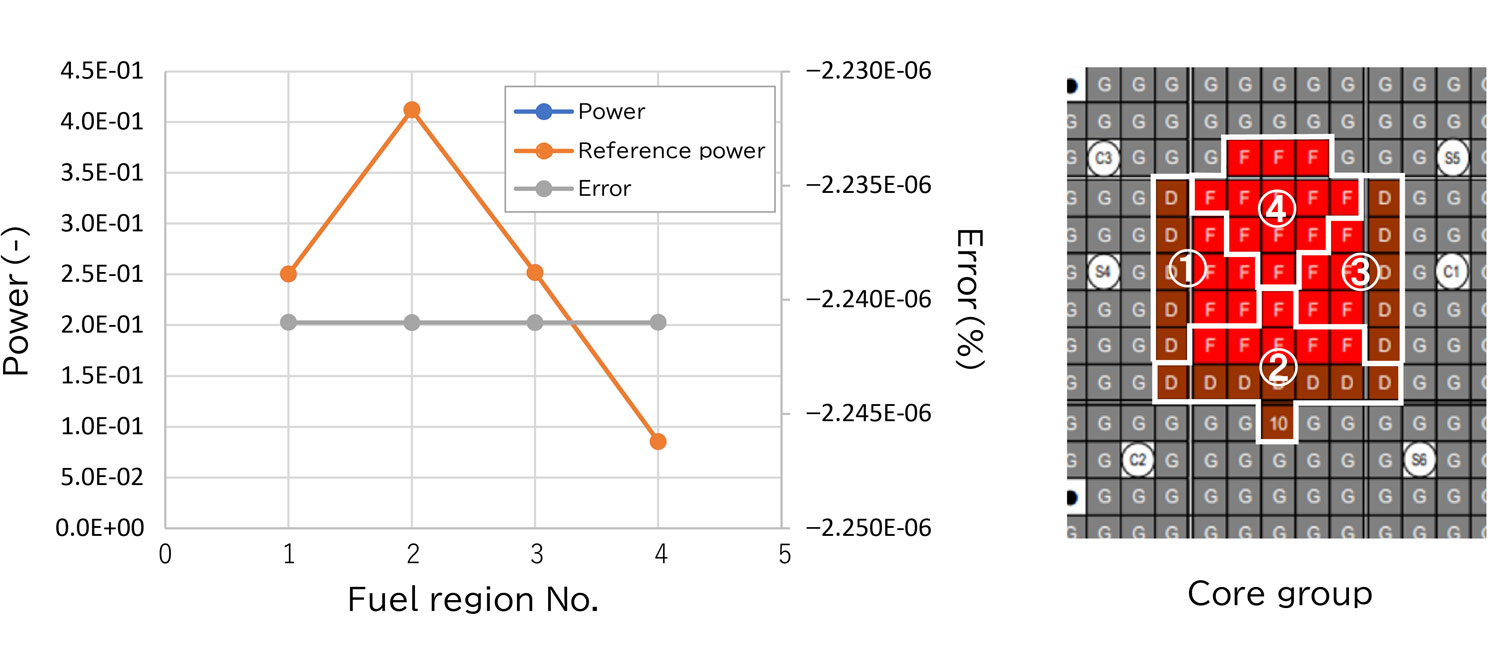Publication Date: March 31, 2025
Access counts:0
Completion of CT Principle-Based In-Core Power Distribution Measurement Technology
-Demonstration of Principle Through Critical Experiments-

Fig. 1 KUCA core and stepping motor

Fig. 2 Power and error of four groups of a core
In the current light water reactors, it is possible to insert a neutron detector directly into the core, and the power distribution is measured by this method to manage the fuel in the core. On the other hand, it is difficult to insert a detector into the core of a high temperature gas-cooled reactor (HTGR), where the temperature inside the reactor can reach 1,000 ℃ or higher.
Therefore, we devised to measure the power distribution by taking advantage of the graphite-moderated HTGR, which has a long neutron flight path. In this method, to obtain many measurement points, the detectors outside the reactor are moved, and the power distribution is measured by detecting the leaked neutrons from outside the reactor using the Computed Tomography (CT) principle. The usefulness of this idea was recognized, and in FY2021, the project was accepted by the Ministry of Education, Culture, Sports, Science and Technology of Japan (MEXT) for the "Development of Nuclear Instrumentation System for Power Distribution Measurement in High Temperature Gas-cooled Reactors" under the Innovative Nuclear Research and Development Program. The project was developed for practical use through industry-academia-government collaboration among JAEA, ANSeeN Inc. and Shizuoka University. This development will be completed in FY2024. During the development, ANSeeN Inc. and Shizuoka University's discussions led to the conclusion that the improvement of the HTTR output monitor's detector to move up and down would pose no technical challenges. For the technical demonstration of the principle, we also succeeded in reproducing the output distribution at KUCA, a critical assembly at the Institute for Integrated Radiation and Nuclear Science, Kyoto University (Figs.1 and 2).
This work was supported by MEXT Innovative Nuclear Research and Development Program Grant Number JPMXD0221459236.
If you have any comments or feedback about this page, please click the button to share your thoughts with us.
